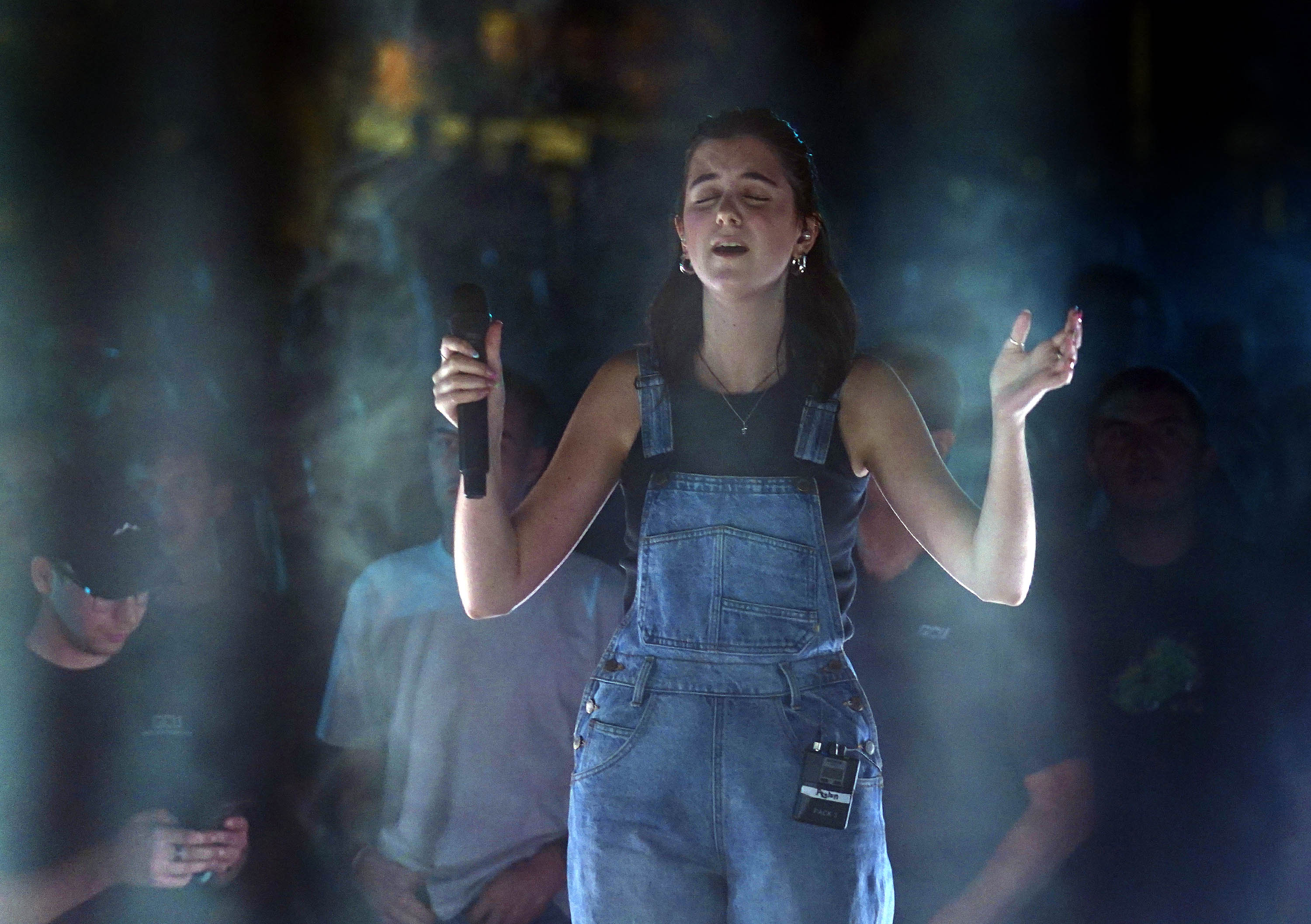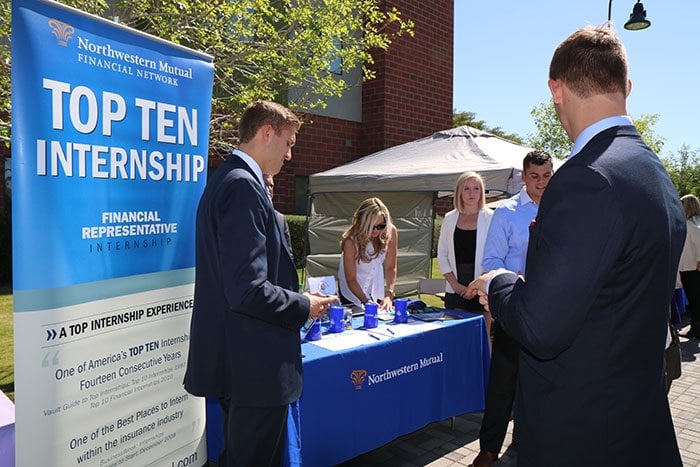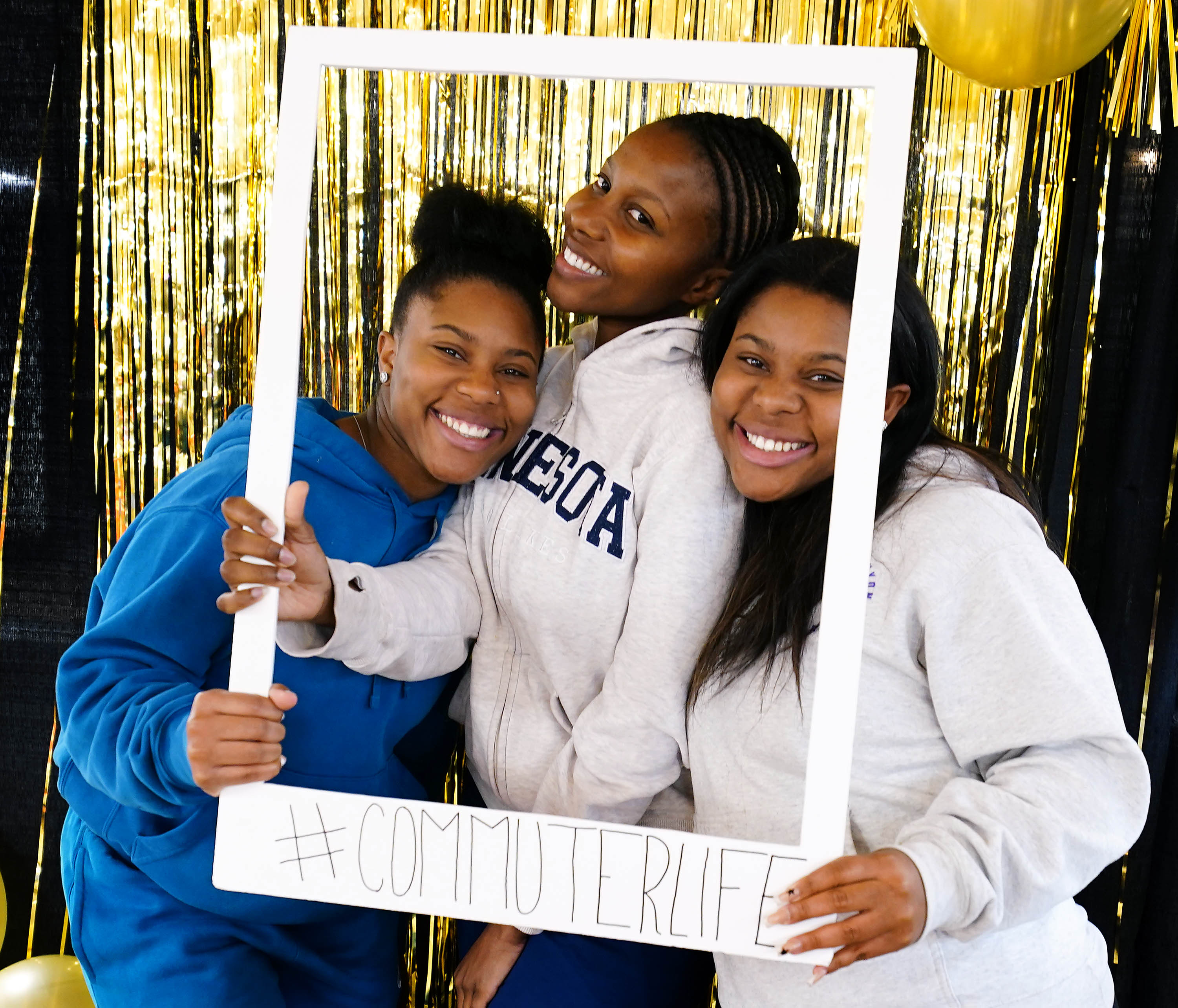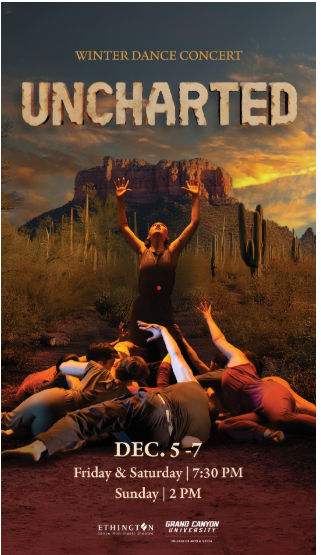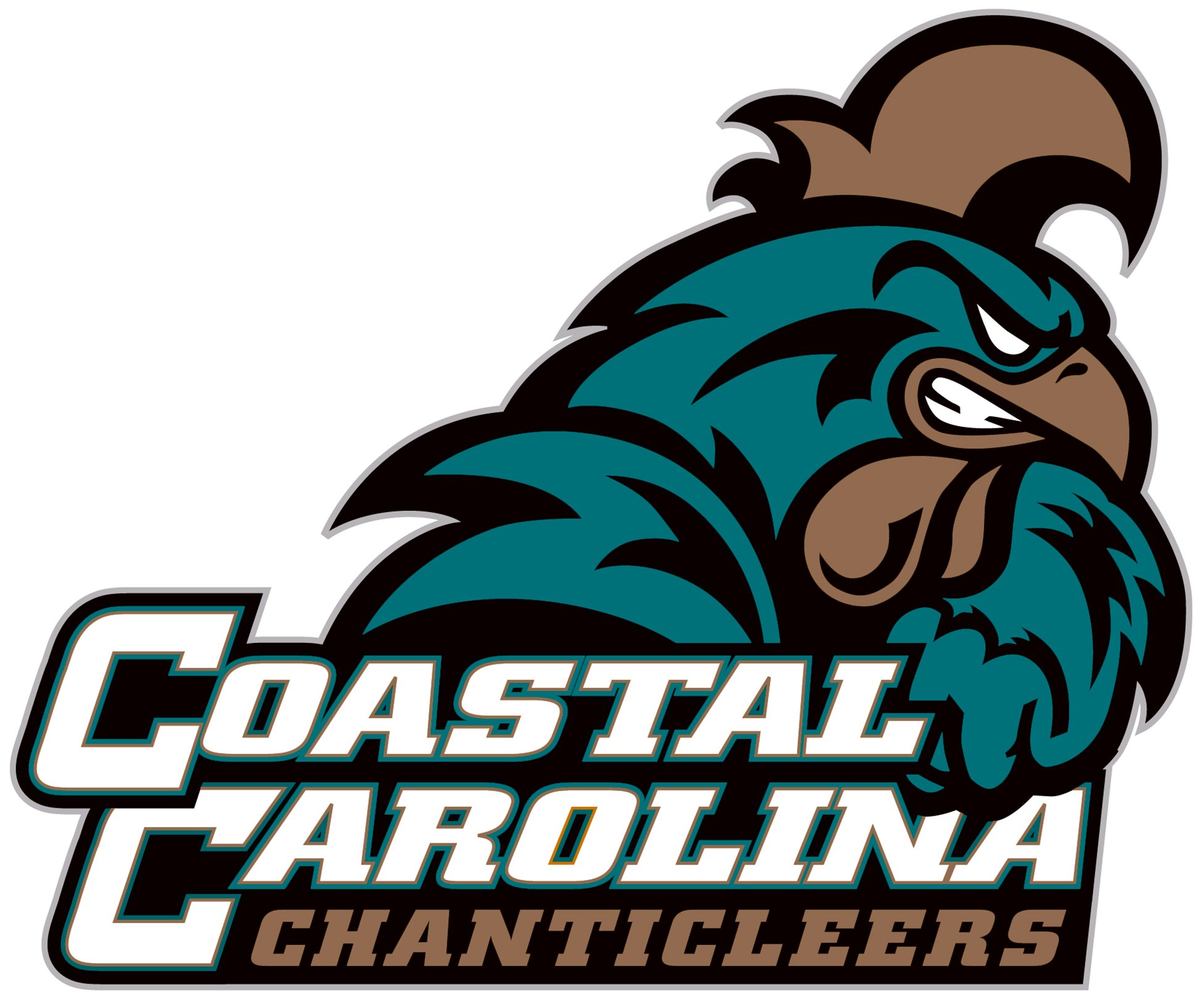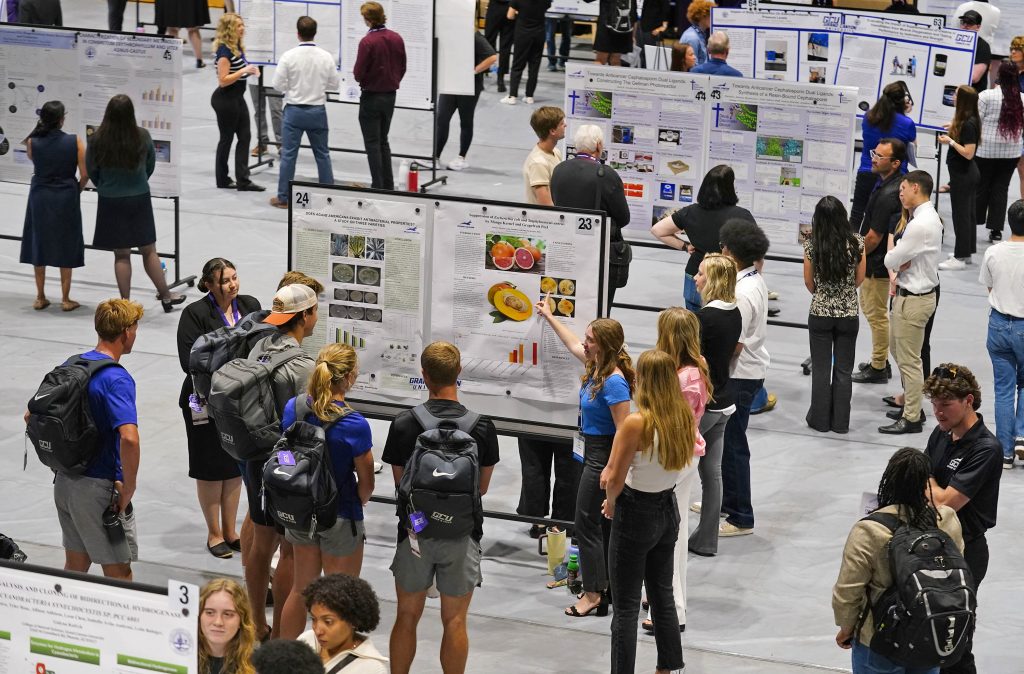
More than 90 posters presented at GCU's Super Bowl of research conferences
Photos by Ralph Freso / Slideshow
Lean, mean fighting machines? There’s much to be said about them.
The boxing community likes them. The military? Likes them.
But does lean really mean you’re fit – specifically, that you should concentrate on leanness when it comes to beasting the ACFT, the infamously grueling Army Combat Fitness Test, a six-event suite of physical fitness challenges that determines whether a soldier is physically ready for combat?
Exercise science major Elizabeth Liu, during Monday’s Grand Canyon University Canyon Undergraduate Research Conference in Antelope Gymnasium, will tell you that being lean isn't everything.
“Our finding was that it doesn’t necessarily matter how lean an individual is. What does matter is how in shape their heart is,” said Liu, who presented the study, which she did with co-researchers Megan Bratetic and Jake Laufenberg and their professor in the College of Natural Sciences, Dr. Zachary Zeigler.
For the study, “Aerobic Fitness Outperforms Body Composition in Predicting ACFT Scores Among ROTC Cadets and Active Military Personnel,” the group looked at 97 ROTC cadets and active military personnel to determine whether body fat percentage or a high aerobic capacity had a bigger effect on how well they performed on the fitness test.
Those with a higher lung capacity tended to perform better on the test, regardless of body fat percentage.
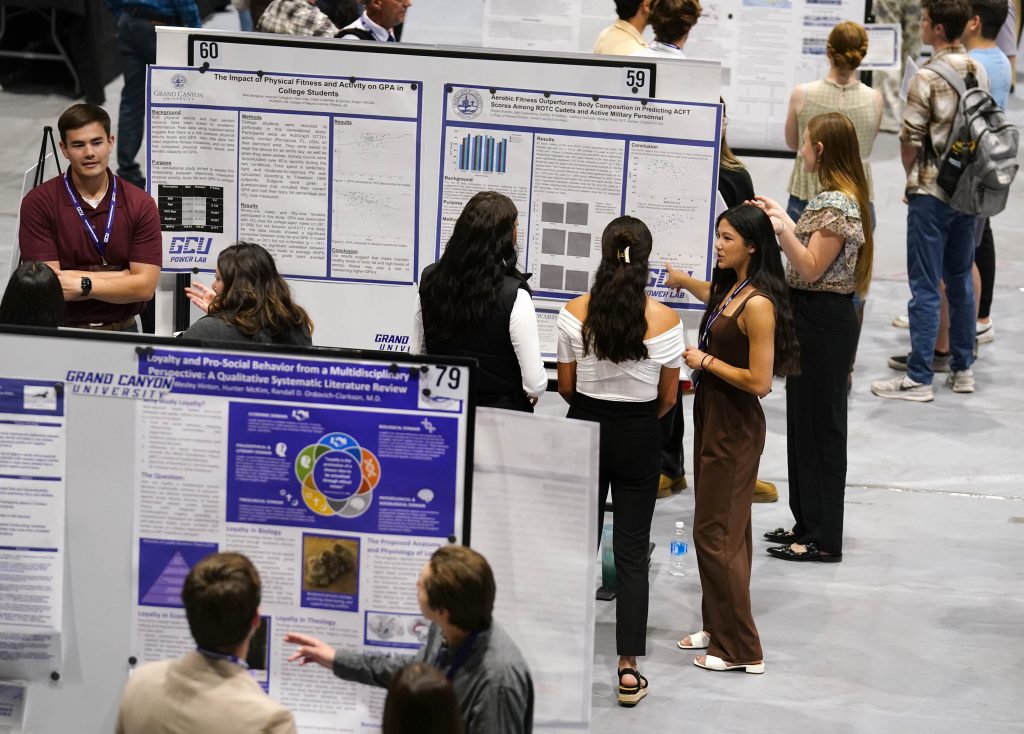
At the heart of their findings: the heart, or more specifically, aerobic capacity, beat out leanness when it comes to performance.
The poster won a Dean’s Award, given by College of Natural Sciences Associate Dean Dr. Jon Valla, for research and presentation excellence.
Liu was just one of 239 student participants putting their research and academic prowess on parade at the conference. They presented 93 research posters that included, for the first time, high school scholars, and spoke about their work in 36 talks unfurling concurrently in eight different classrooms.
"The most important thing about this conference is that we are able to give students the opportunity to talk about the research and experiential learning opportunities they are a part of," said Katalina Inzunza Herrera, the Honors College's academic program manager, who was central to organizing the conference. "They get to do such interesting things, and this conference gives them a forum to share that with others."
In the new high school poster section of the event, Dr. Breanna Naegeli, dean of the Honors College, said three high schools participated. "In the future, we hope to grow and expand the high school scholars. It's great for them to be able to see what we're doing here at GCU and how it aligns with their interest, but also, our students have a chance to mentor and provide insight."
The Canyon Undergraduate Research Conference is the university’s Super Bowl of research events that, once-upon-a-time, was two separate events, one by the College of Natural Sciences and a separate Honors College event.
They merged into one big event that now features three programs, with student researchers spanning all colleges, and not just in the poster portion on the gym floor.
The conference highlighted student talks in the Canyon Undergraduate Research Symposium portion of the conference. Also part of the event was the Honors Showcase, whose participants were eligible for scholarships. And the Canyon Emerging Scholars program also was featured. It's the rebranded name of the College of Natural Sciences-based Research and Design Program and now includes teams from several colleges.
In the poster portion of the conference, it was GCU freshman Ana Camorlinga’s first time to be involved with a research project.
“I think, honestly, what’s been the most important thing is just being introduced to the whole world of research,” said the biology/premed major. “I’m very fresh into all of this, so it’s very interesting to see all the mechanisms you can do, especially this research.”
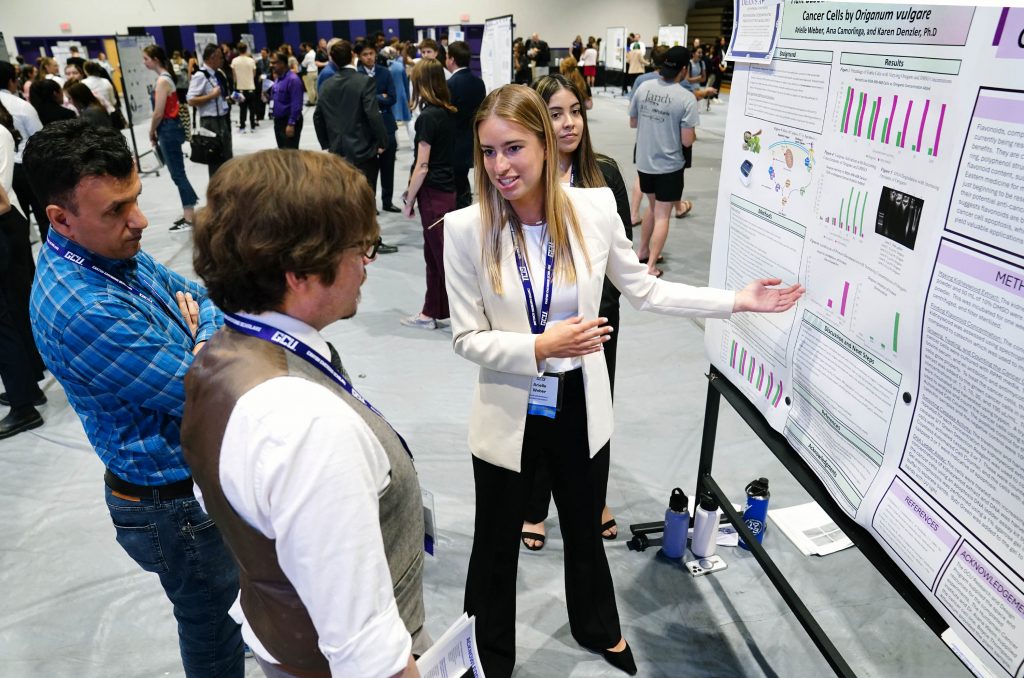
The team she worked with, under advisor Dr. Karen Denzler, presented the poster, “Plant-Based Induction of Apoptosis in Breast Cancer Cells by Origanum Vulgare,” which also won a Dean’s Award.
The team looked at whether oregano has any positive effects in relation to breast cancer cells, and it did. The students put an oregano solution directly onto breast cancer cells and looked at how increasing the concentration of that oregano solution affected cell viability.
“As you increased the concentration of oregano, this decreased the viability of cells,” said Camorlinga’s teammate, Arielle Weber.
Adding 3 microliters per milliliter, only 48% of the cancer cells were viable. Compare that to adding 30 microliters per milliliter and only 10% of the cells were still living. The oregano solution seemed to bring on apoptosis, when a cell intrinsically decides it’s time to die. The team said it could be because oregano is high in flavonoids, which are antioxidants that can protect cells from damage caused by free radicals. Oregano also has anti-inflammatory and antimicrobial properties.
“I found it very interesting seeing how a plant can cause (cell death). … That kind of blows my mind,” Camorlinga said.
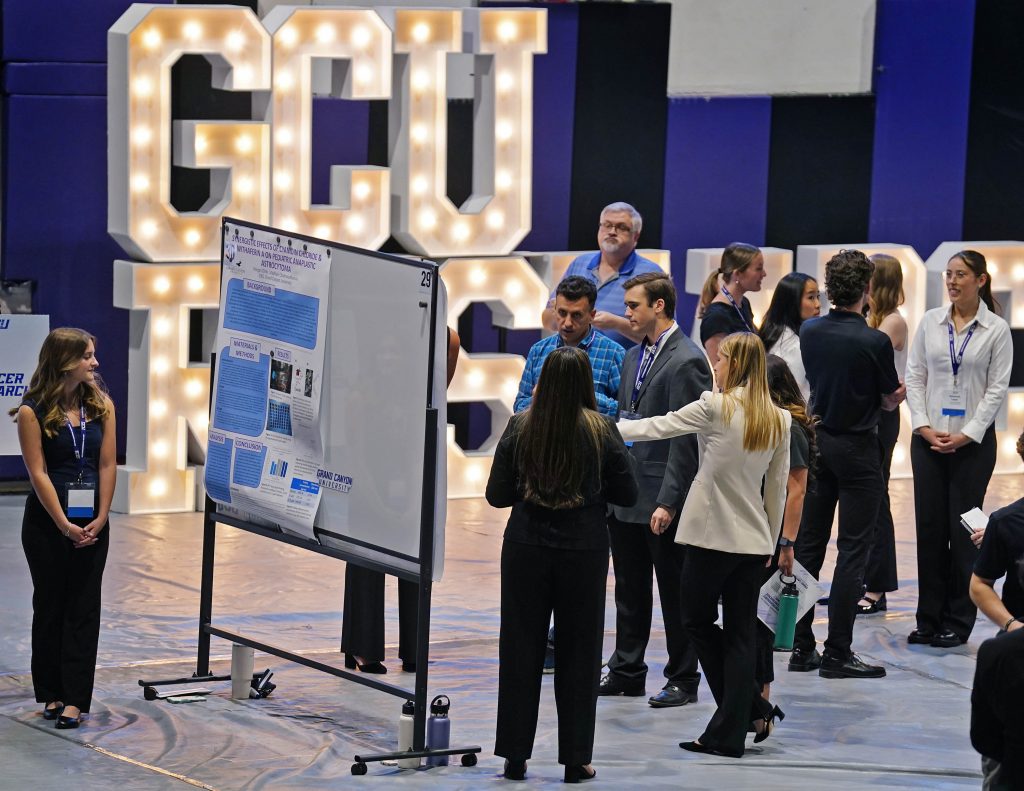
Several other students in the poster presentations looked at the medicinal value of plants, such as Ava Bautista, who studied how well extracts from river bushwillow and monk’s pepper tree inhibit the growth of bacteria. Both have been used in traditional medicine to treat inflammation and various other illnesses.
She said she did see good results with her study, which she’ll continue next semester.
Bautista said the research team she is a part of tested more than a dozen plants this semester.
In keeping in the health realm of the poster presentations, Paige Albrecht spoke about her team’s study, “Body Fat’s Independent Association with Cardiovascular Parameters Beyond Cardiorespiratory Fitness: Analysis of Blood Pressure and Arterial Stiffness Measures.”
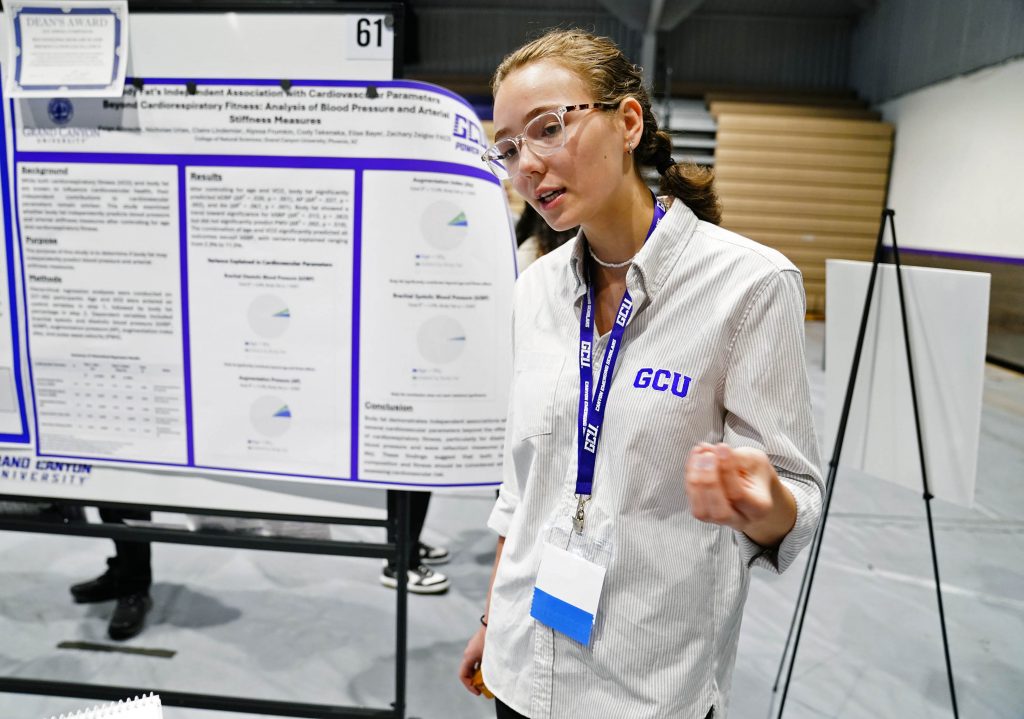
Translation: Does body fat matter when it comes to cardiovascular health?
In recent years, there’s been a trending thought that you can be overweight and still be healthy – that body fat has an independent association in how healthy your cardiovascular system is.
Albrecht, a biology/pre-physical therapy major, said the team looked at body fat and V02 max, or maximal oxygen uptake – a measurement of the maximum oxygen a person can use during intense exercise – and their affect on different cardiovascular markers, such as systolic and diastolic pressure.
“We took all the students of the same age and V02 max and said, if these students have the same data points, if we add body fat percentage, are we going to see a difference in their cardiovascular health?” she said.
“Previous data has kind of shown that if you do control VO2 max and age, then your body fat doesn’t add very much because your body is healthy, and so, how much fat you have doesn’t really matter,” added Albrecht. “Basically, what this is showing is, yeah, it still matters.”
Sports psychology major Logan Demeter and his team, part of the EPIC Research Lab in the College of Humanities and Social Sciences, looked at the correlation between athletic identity, religious identity and stress.
“We’re trying to see if athletic identity is super high and religious identity is super low, does that change stress and performance,” said Demeter, whose team is in the data collection process and is gathering survey answers from club sports athletes.
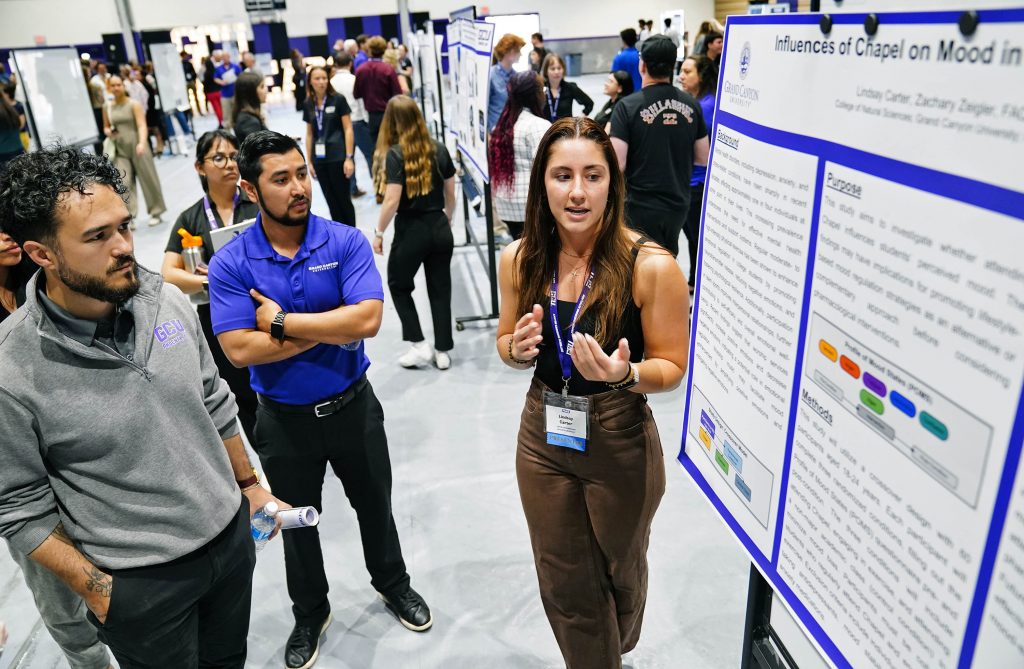
Lindsay Carter, who’s studying exercise science, also turned her attention to spirituality and its role on health, looking at the “Influences of Chapel on Mood in College Students” in her research, working with advisor Dr. Zach Zeigler.
“I go to Chapel regularly and I exercise regularly, so it’s been something I’ve thought about,” she said as she pointed out the findings detailed in her poster.
Her hypothesis: Chapel boosts your mood the same way that exercise has been proven to, she said.
One thing Ava Bautista knew, in presenting her plant research on river bushwillow and monk’s pepper tree, was that she was thrilled to talk about her work and its results.
“It’s very exciting stuff,” she said.
Manager of internal communications Lana Sweeten-Shults can be reached at [email protected] or at 602-639-7901.




